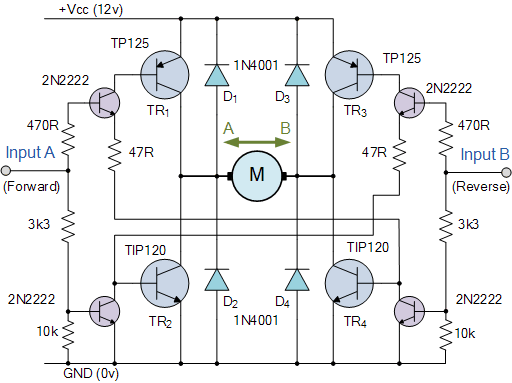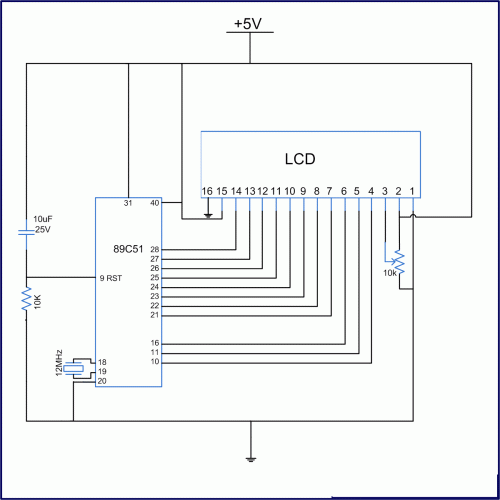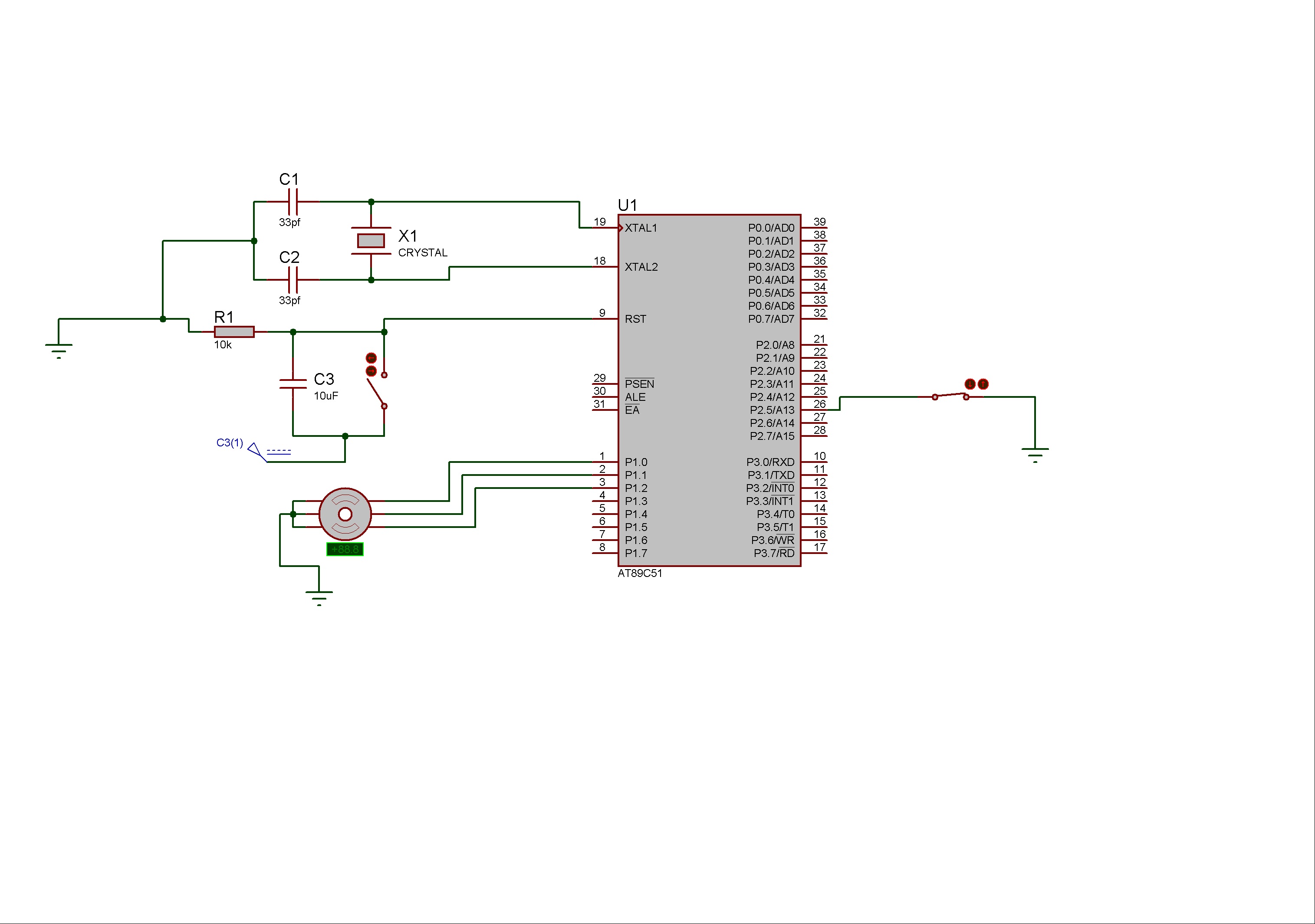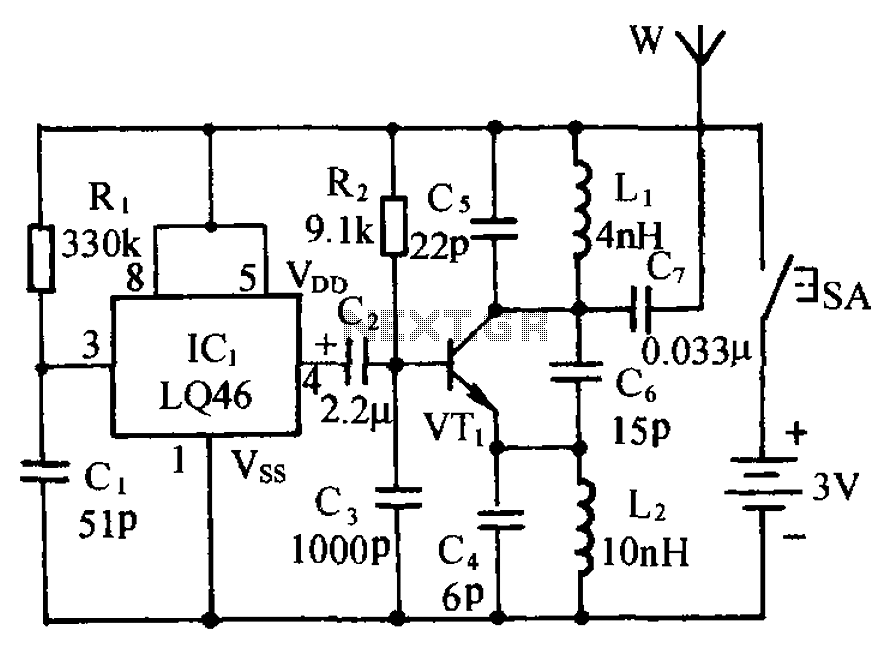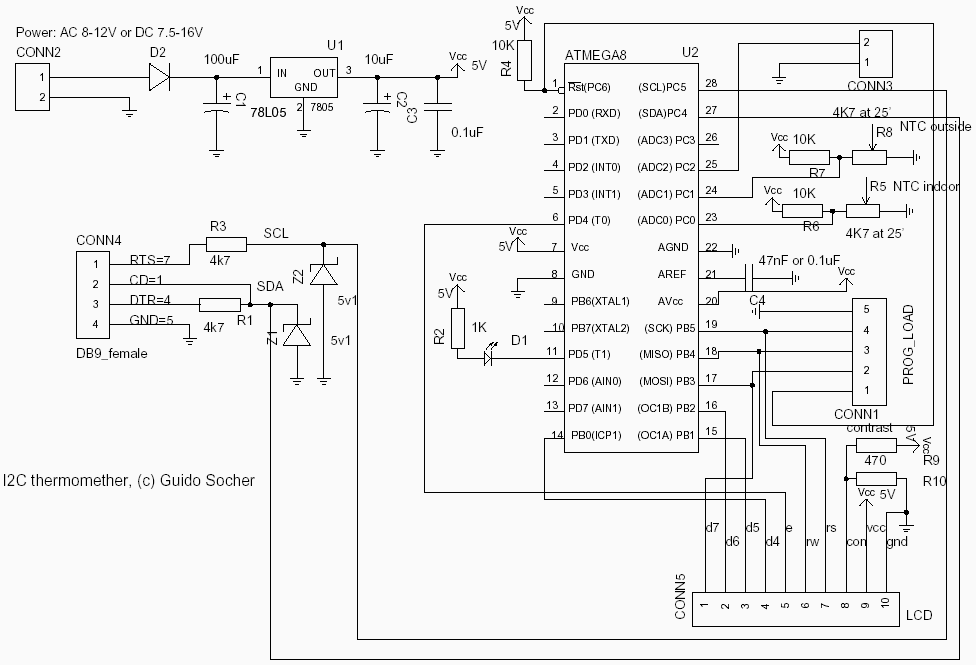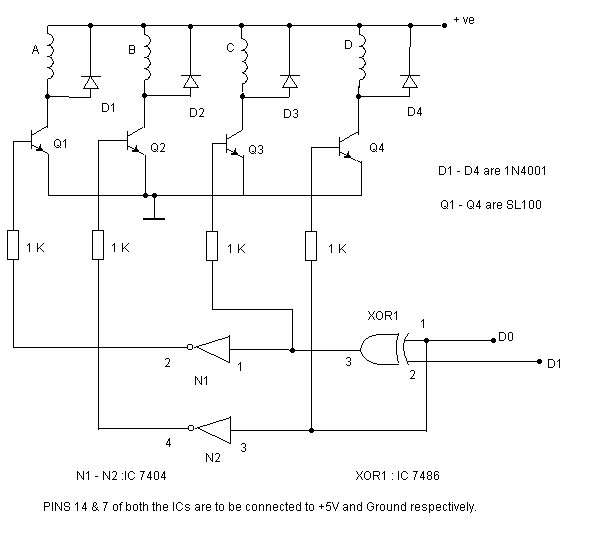
micro stepper
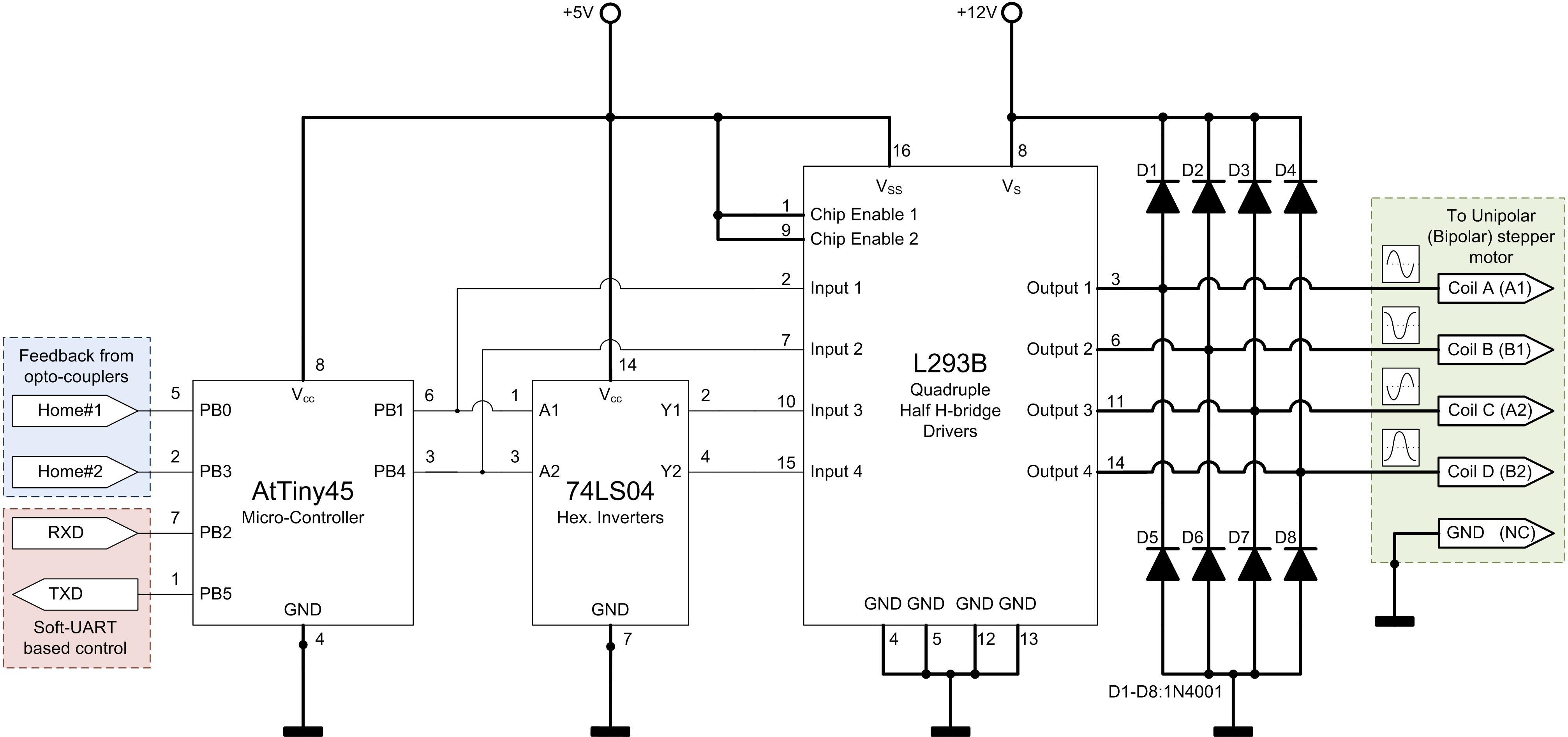
In a traditional microstepping motor controller, multiple parallel outputs from a microcontroller are utilized, which are then converted to analog signals using a Digital-to-Analog Converter (DAC) and sent through a power amplifier to drive the motor coils. This method is inefficient in terms of power consumption and the number of General Purpose Input/Output (GPIO) pins used, thus increasing the complexity of the design. The system presented here offers an efficient alternative by employing only two GPIO pins for microstepping. Consequently, the entire system is compact enough to fit into an 8-pin device, which can be referred to as "The world's smallest Microstepping Motor Controller." The design leverages the full capabilities of the 8-pin, 8-bit AtTiny microcontroller, providing various features.
The microstepping motor controller operates by utilizing a unique algorithm that allows for precise control of the motor's position and speed while minimizing power consumption. By reducing the number of GPIO pins required, the design simplifies the circuit layout, making it more accessible for integration into various applications. The AtTiny microcontroller is programmed to generate the necessary control signals directly, eliminating the need for external DACs and amplifiers.
The two GPIO pins are configured to output pulse-width modulation (PWM) signals that effectively control the current flowing through the motor coils. This technique allows for smooth and precise microstepping, enhancing the motor's performance and reducing vibrations during operation. Additionally, the compact design of the controller makes it suitable for applications where space is limited, such as in robotics, automation, and portable devices.
Overall, this innovative approach not only simplifies the design but also enhances the efficiency and performance of microstepping motor control, making it a valuable solution for modern electronic applications.In a traditional microstepping motor controller, many parallel outputs of a microcontroller are used which are then converted to analog signals using a DAC and fed through a power amplifier to the motor coils. This approach is inefficient both in terms of the power consumed and the number of GPIO`s used thus increasing the design complexity.
Our system described herein is an efficient alternative using just two GPIO pads to carry out microstepping. As a result, the whole package fits into an 8 pin device and can be aptly called "The world`s smallest Microstepping Motor Controller. " The design utilizes the full power of the 8 pin, 8 bit AtTiny microcontroller providing features such as: I was primarily involved with the visualization of the idea and the electronic (hardware and embedded software) part of this project while Deepansh developed the UI in MS visual studio and assisted in writing the microcontroller code.
🔗 External reference
The microstepping motor controller operates by utilizing a unique algorithm that allows for precise control of the motor's position and speed while minimizing power consumption. By reducing the number of GPIO pins required, the design simplifies the circuit layout, making it more accessible for integration into various applications. The AtTiny microcontroller is programmed to generate the necessary control signals directly, eliminating the need for external DACs and amplifiers.
The two GPIO pins are configured to output pulse-width modulation (PWM) signals that effectively control the current flowing through the motor coils. This technique allows for smooth and precise microstepping, enhancing the motor's performance and reducing vibrations during operation. Additionally, the compact design of the controller makes it suitable for applications where space is limited, such as in robotics, automation, and portable devices.
Overall, this innovative approach not only simplifies the design but also enhances the efficiency and performance of microstepping motor control, making it a valuable solution for modern electronic applications.In a traditional microstepping motor controller, many parallel outputs of a microcontroller are used which are then converted to analog signals using a DAC and fed through a power amplifier to the motor coils. This approach is inefficient both in terms of the power consumed and the number of GPIO`s used thus increasing the design complexity.
Our system described herein is an efficient alternative using just two GPIO pads to carry out microstepping. As a result, the whole package fits into an 8 pin device and can be aptly called "The world`s smallest Microstepping Motor Controller. " The design utilizes the full power of the 8 pin, 8 bit AtTiny microcontroller providing features such as: I was primarily involved with the visualization of the idea and the electronic (hardware and embedded software) part of this project while Deepansh developed the UI in MS visual studio and assisted in writing the microcontroller code.
🔗 External reference
